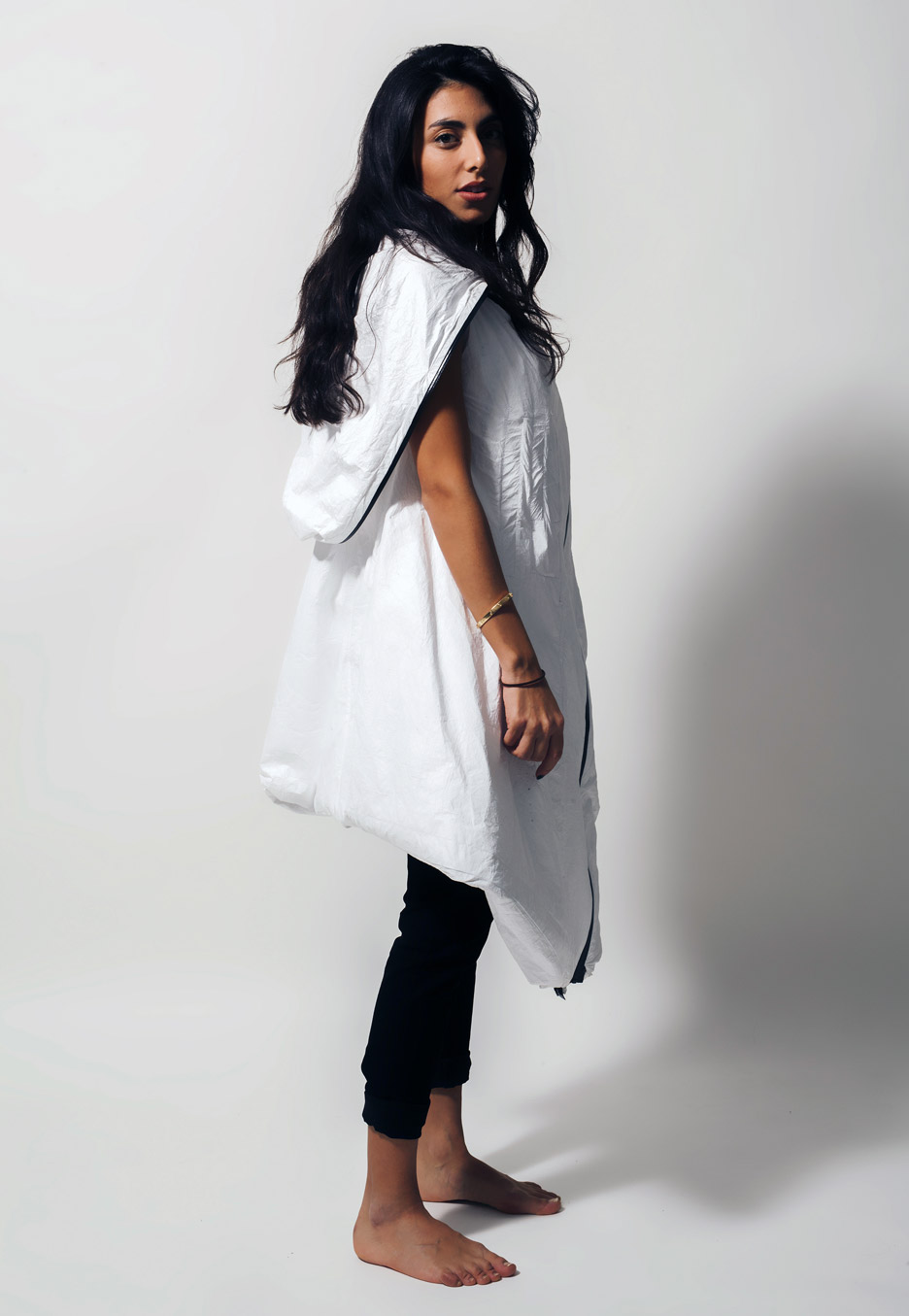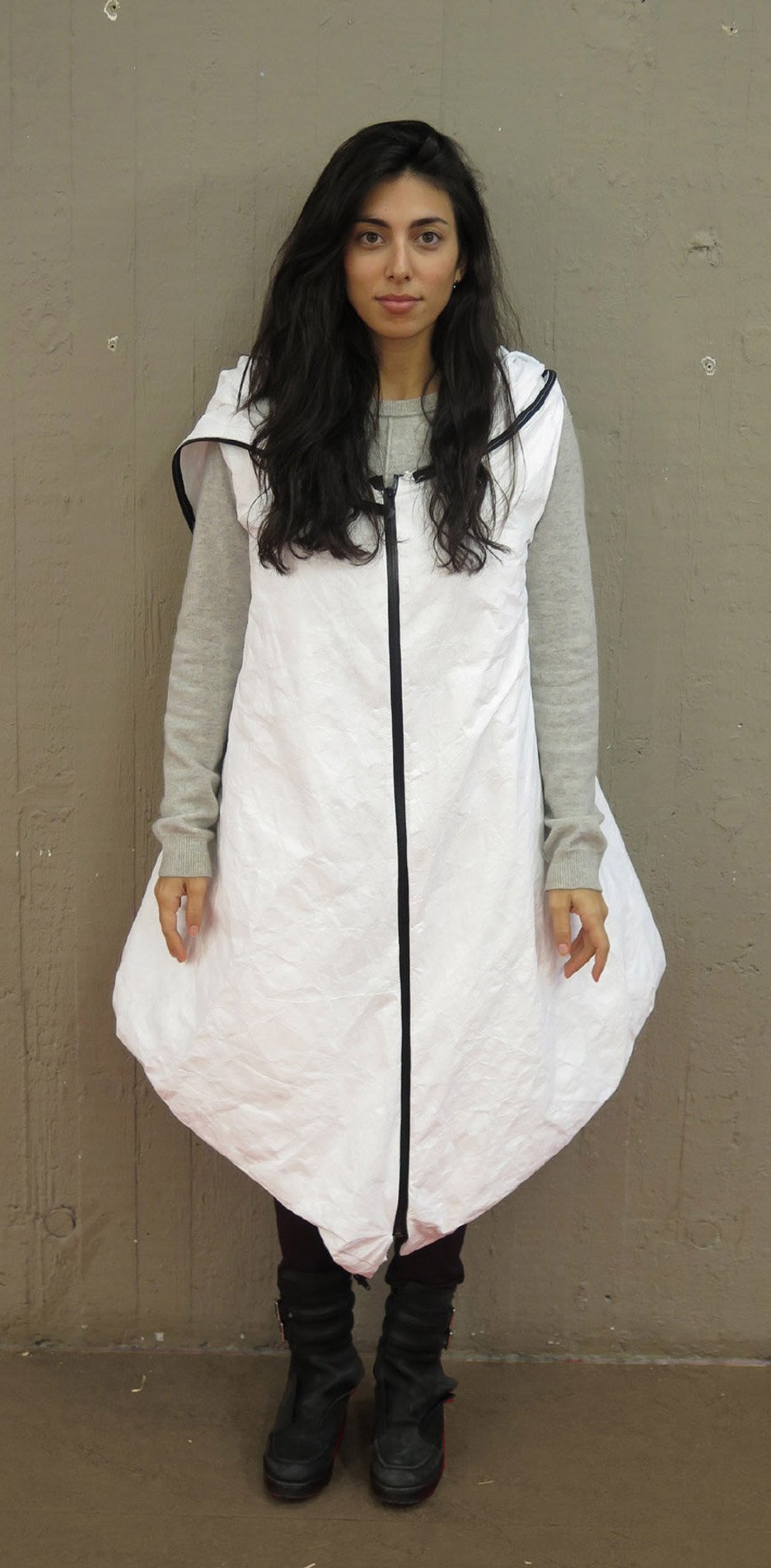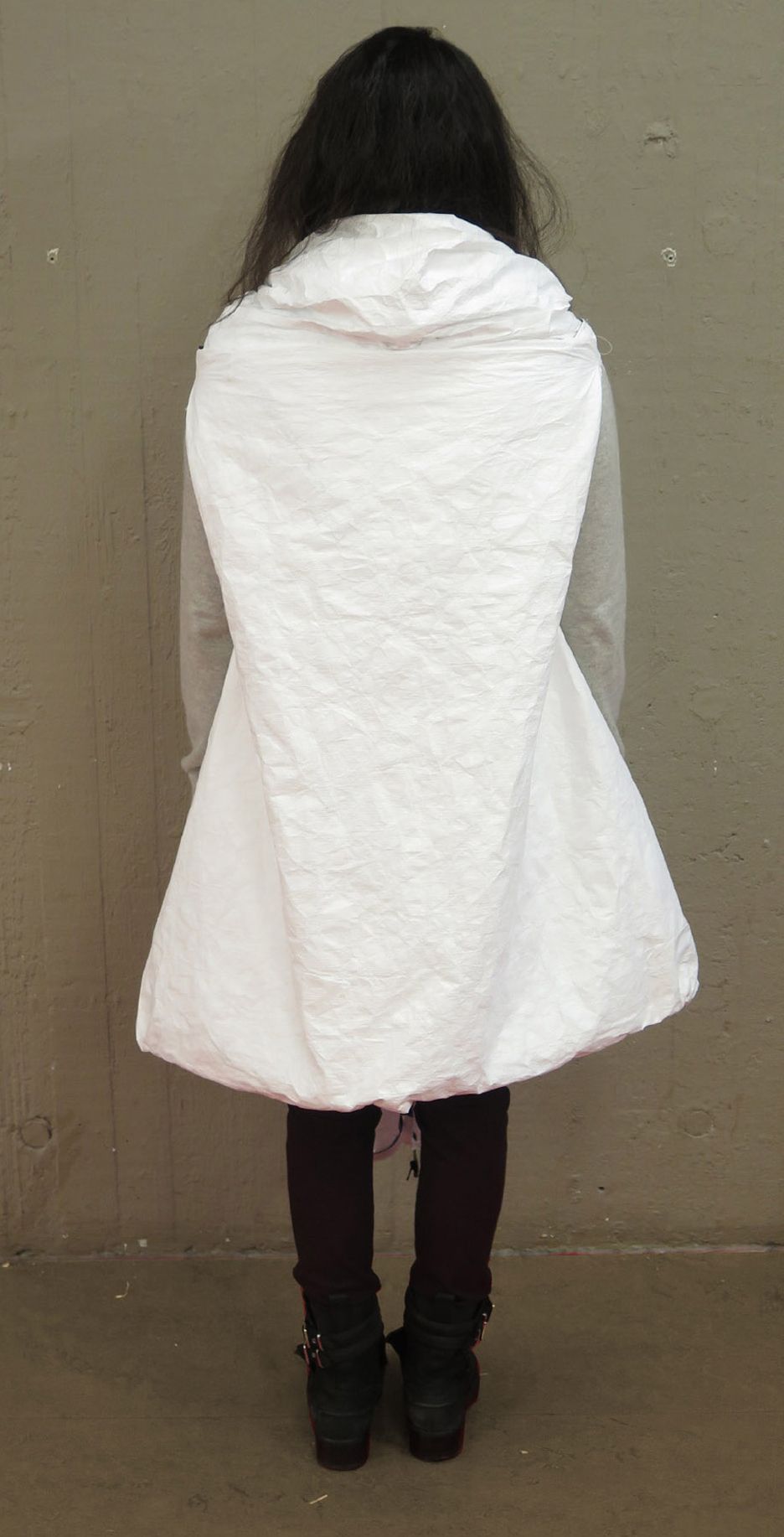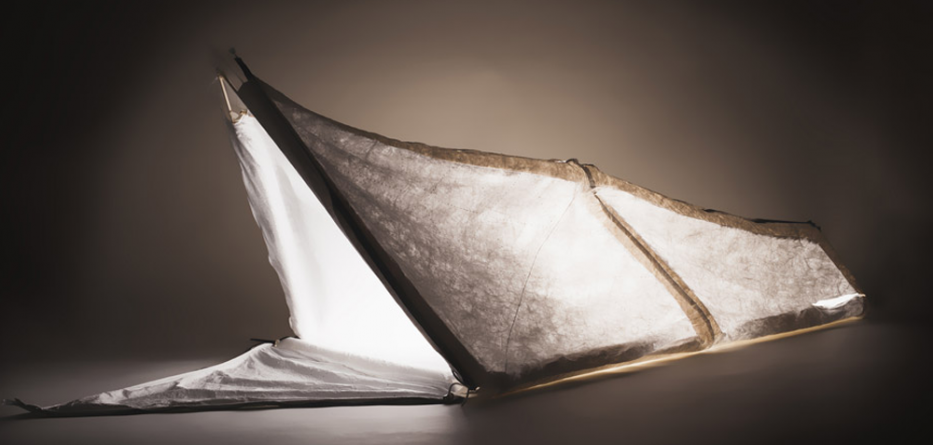The brief for the Wearable Habitation project – set by professors Harris and Graeme Brooker – stated that the coats had to be able to reconfigure into a small dwelling or tent-like structure with enough room to accommodate two to four people. Material used needed to be both cost effective and sustainable where possible.

Made from paper-like synthetic material Tyvek, the Wearable Habitation coat is insulated with Mylar – a polyester material commonly used by marathon runners to keep warm.
When worn as a coat, the design resembles a baggy parka with a large hood. Pockets on the inside can be used to store passports and personal documents.

Black zips allow the coat to be completely opened out and transformed into a sleeping bag. Lightweight kite-rods can then be fed through specific seams to form a tent. Visual assembly instructions will be printed onto each garment The coat was developed by mixed teams of students from the RCA’s interior design and textile courses, who were asked to develop wearable shelters for those displaced by conflict in their home countries.

The brief for the Wearable Habitation project – set by professors Harris and Graeme Brooker – stated that the coats had to be able to reconfigure into a small dwelling or tent-like structure with enough room to accommodate two to four people. Material used needed to be both cost effective and sustainable where possible.
Source: dezeen









